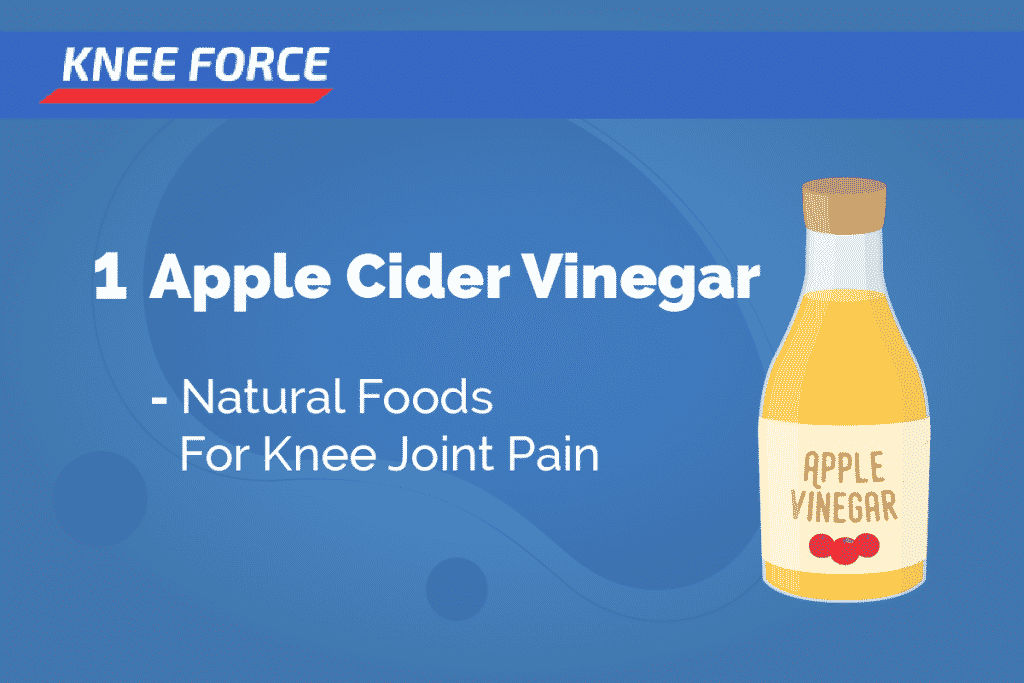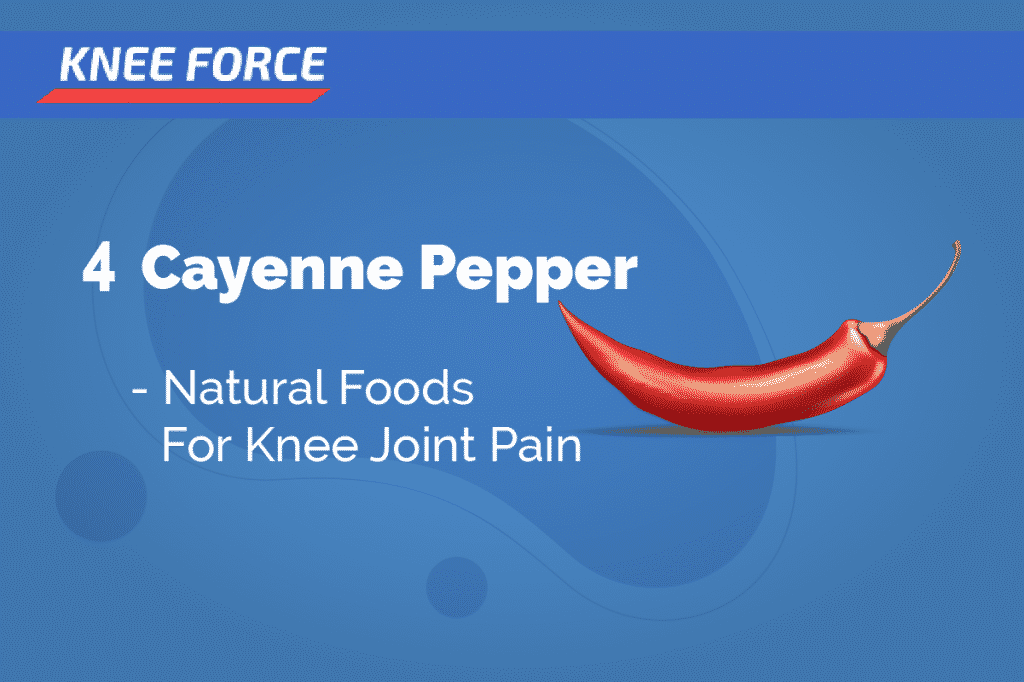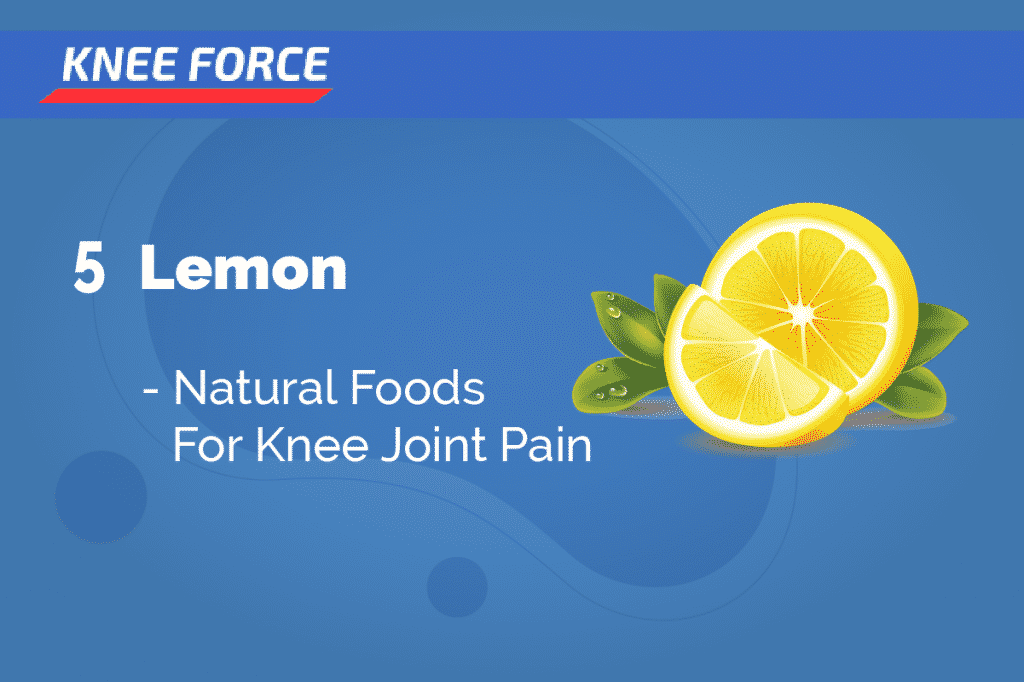Whether it is a temporary spasm or a debilitating pain in your knee joint, it is a constant reminder of the physical stress that you put your body through every day. If you do not want to pop in painkillers and are looking for natural alternatives for relief from this excruciating knee joint pain, you have landed on the right page.
We have come up with 11 best natural foods that will not only relieve the pain but also restore the normal functioning of your legs.
Scroll down to know more.
Natural Foods To Reduce Knee Joint Pain

1. Apple Cider Vinegar
You Will Need
- 2 teaspoons of apple cider vinegar
- 1 glass of warm water
What You Have To Do
- Add two teaspoons of apple cider vinegar to a glass of water and mix well.
- Consume this solution daily, preferably before meals.
- You can also mix two tablespoons of apple cider vinegar with a tablespoon of coconut oil and apply it to the affected knee.
- How Often You Should Do This
- You must do this twice daily.
Why This Works
Apple cider vinegar, whether it is consumed or applied topically, helps combat knee joint pain. It contains acetic acid that exhibits anti-inflammatory properties, which help reduce the pain and swelling in the affected area (1).
2. Ginger
You Will Need
- 1-inch piece of ginger
- 1 cup of water
- Gauze or a clean washcloth
What You Have To Do
- Add an inch of ginger to a cup of water.
- Bring it to a boil and simmer for 5 minutes.
- Strain and allow the solution to cool for a while.
- Dip a clean washcloth or gauze in the warm ginger water and place it on the affected area.
- Wrap the soaked cloth around your knee and allow it to work.
- You can also consume ginger tea daily.
- How Often You Should Do This
- Do this several times daily for best results.
Why This Works
Ginger was found to help individuals suffering from knee pain due to osteoarthritis (2). The presence of compounds like gingerol makes it a powerful anti-inflammatory and analgesic remedy (3).
However, It may be easier to reap the benefits of ginger by taking it as a supplement.
Our recommendation: Vitapost’s turmeric and ginger supplement (our review).
3. Turmeric
You Will Need
- 1 teaspoon of turmeric
- 1 glass of coconut or almond milk
What You Have To Do
- Add a teaspoon of turmeric to a glass of hot milk and mix well.
- Consume the mixture.
- You can also make a paste of turmeric and apply it to the affected area.
How Often You Should Do This
Do this twice daily.
Why This Works
Curcumin, the major component of turmeric, is a powerful anti-inflammatory compound. It was found to alleviate symptoms of joint pain and inflammation in multiple studies owing to its anti-inflammatory properties (4, 5).
Learn more: Our complete guide on turmeric for knee pain.
4. Cayenne Pepper
You Will Need
- 3 tablespoons of cayenne pepper
- 1 cup of olive oil
- ½ cup of grated beeswax
- A double boiler
- A lidded glass jar
What You Have To Do
- Add three tablespoons of cayenne pepper to a cup of olive oil.
- Heat in a double boiler for about 10 minutes on medium heat.
- Add half a cup of grated beeswax to this while stirring continuously.
- Continue stirring until the mixture is smooth, and the beeswax has dissolved completely.
- Refrigerate the mixture for 10 minutes, after which you have to whisk it again.
- Chill for 15 minutes and whisk the mixture once more.
- Transfer the balm to a glass jar with a lid and refrigerate.
- Use the mixture as and when required.
- This mixture can be used for up to one and a half weeks.
How Often You Should Do This
You must apply this mixture to the affected area multiple times daily.
Why This Works
Cayenne pepper is an excellent remedy for treating knee joint pain as it contains capsaicin. Capsaicin acts as a natural pain reliever due to its anti-inflammatory and analgesic activities (6).
5. Lemon
You Will Need
- 1 lemon
- 1 tablespoon of sesame oil
What You Have To Do
- Extract the juice of a lemon.
- Mix it with a tablespoon of sesame oil.
- Apply this mixture topically to the affected knee.
- Leave it on for about 30 to 40 minutes.
- Repeat as required.
- You can also consume lemon juice daily for faster recovery.
How Often You Should Do This
You must do this 3 to 4 times daily.
Why This Works
Lemons have anti-inflammatory properties that help reduce the inflammation, pain, and swelling that accompany knee pain (7).
6. Olive Oil
You Will Need
Extra virgin olive oil (as required)
What You Have To Do
- Take some olive oil in your palms and massage it into the affected knee.
- Leave it on and allow it to evaporate naturally.
- If you are uncomfortable with the stickiness, you can leave the oil on for about 30 minutes and then wash it off.
- How Often You Should Do This
- Do this 3 to 4 times daily for effective results.
Why This Works
The active constituents of olive oil include biologically active polyphenols like hydroxytyrosol, tyrosol, oleocanthal, and oleuropein. All these compounds have powerful anti-inflammatory properties that work wonderfully in treating knee joint pain (8).
7. Coconut Oil
You Will Need
- Extra virgin coconut oil (as required)
What You Have To Do
- Take some extra virgin coconut oil and apply it directly to the affected area.
- You can allow it to dry on its own or rinse it off after 30 minutes.
- How Often You Should Do This
- Do this several times in a day.
Why This Works
Coconut oil can help reduce the inflammation and pain associated with knee joint pain with its anti-inflammatory and analgesic activities (9).
8. Fenugreek Seeds
You Will Need
- 2 teaspoons of fenugreek seeds
- 1 glass of water
What You Have To Do
- Add two teaspoons of fenugreek seeds to a glass of water. Soak overnight.
- Strain and consume the water.
- You can also blend the soaked fenugreek seeds and apply the paste on the affected knee.
How Often You Should Do This
You must do this daily.
Why This Works
Fenugreek seeds possess anti-inflammatory and analgesic properties that work wonders in treating the pain and inflammation associated with knee joint pain (10).
9. Dandelion Leaves
You Will Need
- 10-12 dandelion leaves
- 1 cup of water
- Honey
What You Have To Do
- Wash the dandelion leaves thoroughly.
- Bring them to a boil in a saucepan. Simmer for 5 minutes and strain.
- Allow it to cool.
- Add a little honey to it and consume immediately.
- You can also add dandelion leaves to your favorite juice or smoothie.
How Often You Should Do This
You must consume dandelion leaves 1 to 2 times daily for best results.
Why This Works
Regular consumption of dandelion leaves can help relieve knee pain to a great extent, and this is due to their powerful anti-inflammatory properties (11).
10. Mustard Oil
You Will Need
- Mustard oil (as required)
What You Have To Do
- Take some mustard oil in your palms and massage it directly onto the affected knee.
- Repeat as necessary.
- You can also add a clove of chopped garlic to the mustard oil.
- How Often You Should Do This
- You must do this several times a day.
Why This Works
The topical application of mustard oil can help relieve pain and inflammation in the affected knee (12).
11. Vitamins D and C
You can include foods rich in vitamins D and C in your diet to get relief from chronic knee joint pain. Vitamin D is necessary for enhancing your bone health, whereas vitamin C is responsible for producing collagen – which is an important protein found in your knee tendons (17), (18).
Consume milk, cheese, poultry, eggs, citrus fruits, broccoli, and spinach to get the required both these vitamins.
Further reading: 6 vitamins for knee pain.
These remedies can help relieve knee joint pain easily. However, to maintain their effect, you can incorporate the following tips into your lifestyle. They will also help in preventing the recurrence of knee pain.














